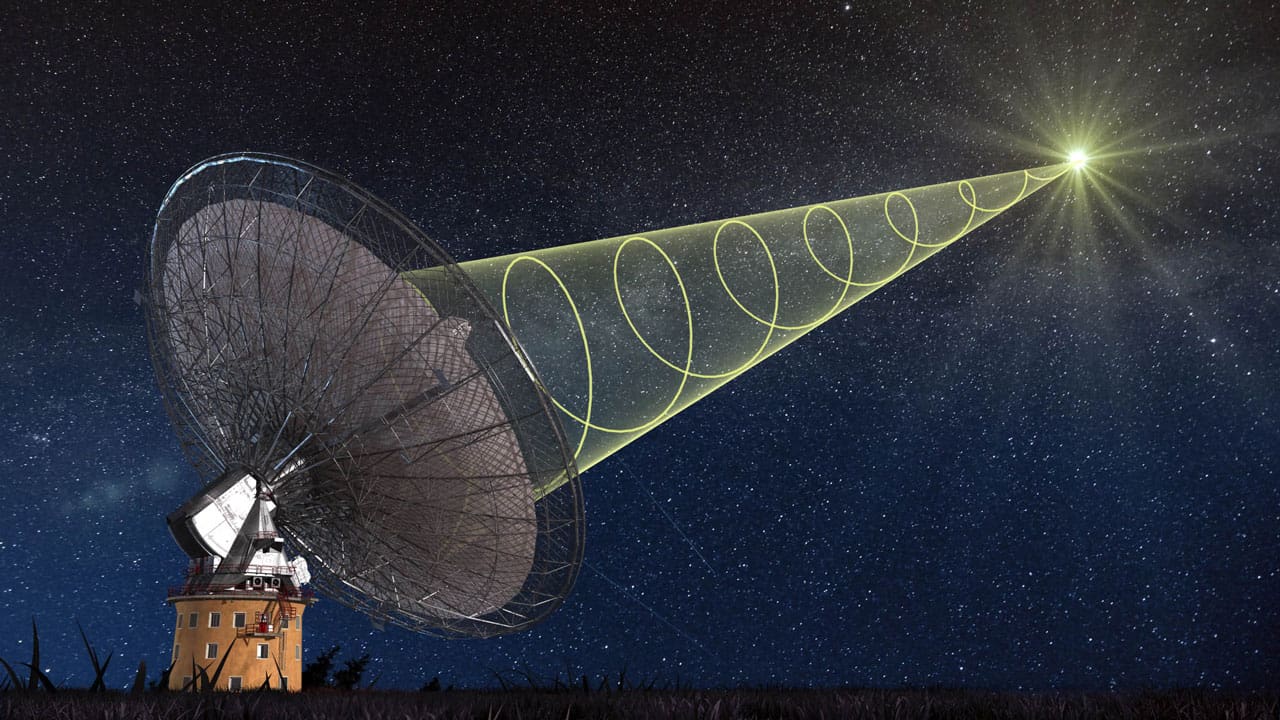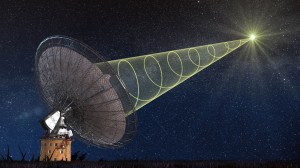
 A strange phenomenon has been observed by astronomers right as it was happening—a “fast radio burst.” The eruption is described as an extremely short, sharp flash of radio waves from an unknown source in the universe.
A strange phenomenon has been observed by astronomers right as it was happening—a “fast radio burst.” The eruption is described as an extremely short, sharp flash of radio waves from an unknown source in the universe.
Over the past few years, astronomers have occasionally observed this new phenomenon—a brief burst of radio waves lasting only a few milliseconds. It was first found by chance in 2007, when astronomers went through archival data from the Parkes Radio Telescope in Eastern Australia. Since then, six more such bursts have been discovered in the Parkes data, and a seventh burst was found in data from the Arecibo telescope in Puerto Rico.
A team of astronomers in Australia developed a technique to search for these bursts in real time. The technique worked, and now a group of researchers, led by Emily Petroff, Swinburne University of Technology in Melbourne, have succeeded in observing the first “live” burst with the Parkes telescope. One of the big unknowns of fast radio bursts has been their distances. The nature of this radio signal—the way it is ‘smeared out’ in frequency from traveling through space—indicate that the source of the new burst is as much as 5.5 billion light-years away.
As soon as the burst was observed, a number of other telescopes around the world were alerted—both on the ground and in space—in order to make follow-up observations in other wavelengths.
“Using the Swift space telescope, we can observe light in the X-ray region, and we saw two X-ray sources at that position,” explains Daniele Malesani, astrophysicist at the Dark Cosmology Center, Niels Bohr Institute, University of Copenhagen.
Then the two X-ray sources were observed using the Nordic Optical Telescope at La Palma. “We observed in visible light and we could see that there were two quasars, that is to say, active black holes. They had nothing to do with the radio wave bursts, but just happen to be located in the same direction,” explains astrophysicist Giorgos Leloudas, Dark Cosmology Center, Niels Bohr Institute, University of Copenhagen, and Weizmann Institute, Israel.
So now what? Even though they captured the radio wave burst while it was happening and could immediately make follow-up observations at other wavelengths ranging from infrared light, visible light, ultraviolet light and X-ray waves, they found nothing. But did they discover anything?
“We found out what it wasn’t. The burst could have hurled out as much energy in a few milliseconds as the Sun does in an entire day. But the fact that we did not see light in other wavelengths eliminates a number of astronomical phenomena that are associated with violent events—such as gamma-ray bursts from exploding stars and supernovae, which were otherwise candidates for the burst,” Malesani points out.
But the burst left another clue. The Parkes detection system captured the polarization of the light. Polarization is the direction in which electromagnetic waves oscillate, and they can be linearly or circularly polarized. The signal from the radio wave burst was more than 20 percent circularly polarized, which suggests that there is a magnetic field in the vicinity of the source.
“The theories are now that the radio wave burst might be linked to a very compact type of object—such as a neutron star or black hole—and the bursts could be connected to collisions or ‘star quakes.’ Now we know more about what we should be looking for,” says Malesani.


Be the first to comment